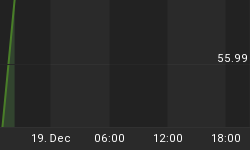Periodically we like to peruse articles we've published previously, reviewing them to see how accurate some of our forecasts turned out. We like to see whether things developed as we predicted, or if there are lessons to be learned so our outlook can be better going forward. Since last week we've done just that.
The first article we came across was from May and was entitled "Bracing for a Breakdown." Just a few weeks before its publication the markets had been shocked by the "Flash Crash" of May 6th, when many equities, led by ETFs, inexplicably crashed.
Our premise at the time was that, in spite of the Flash Crash, the market remained overpriced. Stocks and commodities had simply run too far too fast without any substantial correction. Further, investors appeared to have forgotten many of the markets' sins.
As it turned out, our forecast turned to have some merit. While the correction was largely over, as the market had corrected further after the Flash Crash and before the publication of "Bracing for a Breakdown," the market did continue to pull back several percentage points over the ensuing weeks.
In fact, the market finally bottomed over a month later at the beginning of July, which is significant because it coincided with the publication of another of our articles, "Double-Dippers Reject Reality."
In the weeks leading up to this article, the market correction following the Flash Crash had sparked quite a bit of worry that the economy may be entering a "double-dip," which many had been calling for since the market bottomed in March of 2009 (two years ago this week in fact).
We had long-contended that a double-dip was unlikely, a prediction that turned out to be accurate. In fact, the week our anti-double-dip article was published, stocks bottomed and began what has become more than an eight-month rally. So far the Dow Jones Industrial has climbed more than 25% from low to high.
What we take pride in is not that we were right on these occasions, but that our accuracy allowed us to be profitable for our clients.
Presently our outlook on the economy remains largely unchanged. Despite the lack of confidence expressed in recent Gallup surveys, we continue to believe that the economy is poised to continue its recovery. Obviously the economy can be encouraged by better policies from Washington, and growth might be stifled somewhat if the price of oil continues [substantially] higher, things continue to look good nevertheless.
While things continue to look good for the economy, the outlook for the stock market has changed somewhat.
As mentioned previously, this week marks the 2-year anniversary of the market's post-2008 bottom in March of 2009. Since then, stocks (as represented by the Dow Jones Industrial) have roughly doubled, as many of the problems in this country (e.g. poor policy, excess debt, etc) have been resolved somewhat.
However, this anniversary should have some real significance for investors. After all, the first two years of any market recovery are almost always (a) the most profitable and (b) the easiest. Put simply, the easy money has been made.
That's not too say that there won't be money to be made going forward. As the economy continues to recover, there will undoubtedly be money to be made, but it's going to get harder.
There will certainly be a number of investors who fail to adjust, and they may lose money going forward. There are some that are simply late to the party, and they may end up getting stuck with the tab. Bond giant PIMCO could end up being one example.
For years California-based PIMCO has been a behemoth in the fixed-income world. Run by gurus Bill Gross and Mohamed El-Erian, the firm's Total Return Fund is the single largest mutual fund in the world with assets over $200 billion.
Unfortunately, for all their prowess in the debt world, PIMCO is not known as a big player in equities. It is telling that PIMCO and other players are just now expanding their equity operations, now that the recovery in the stock-market is two years old and the easy money has been made.
PIMCO's move into equities may work out for them in the long run, with interest rates at generational lows and bonds likely to perform poorly over the coming decades. However, they will certainly have their work cut out for them as it gets harder to make money in stocks.
















